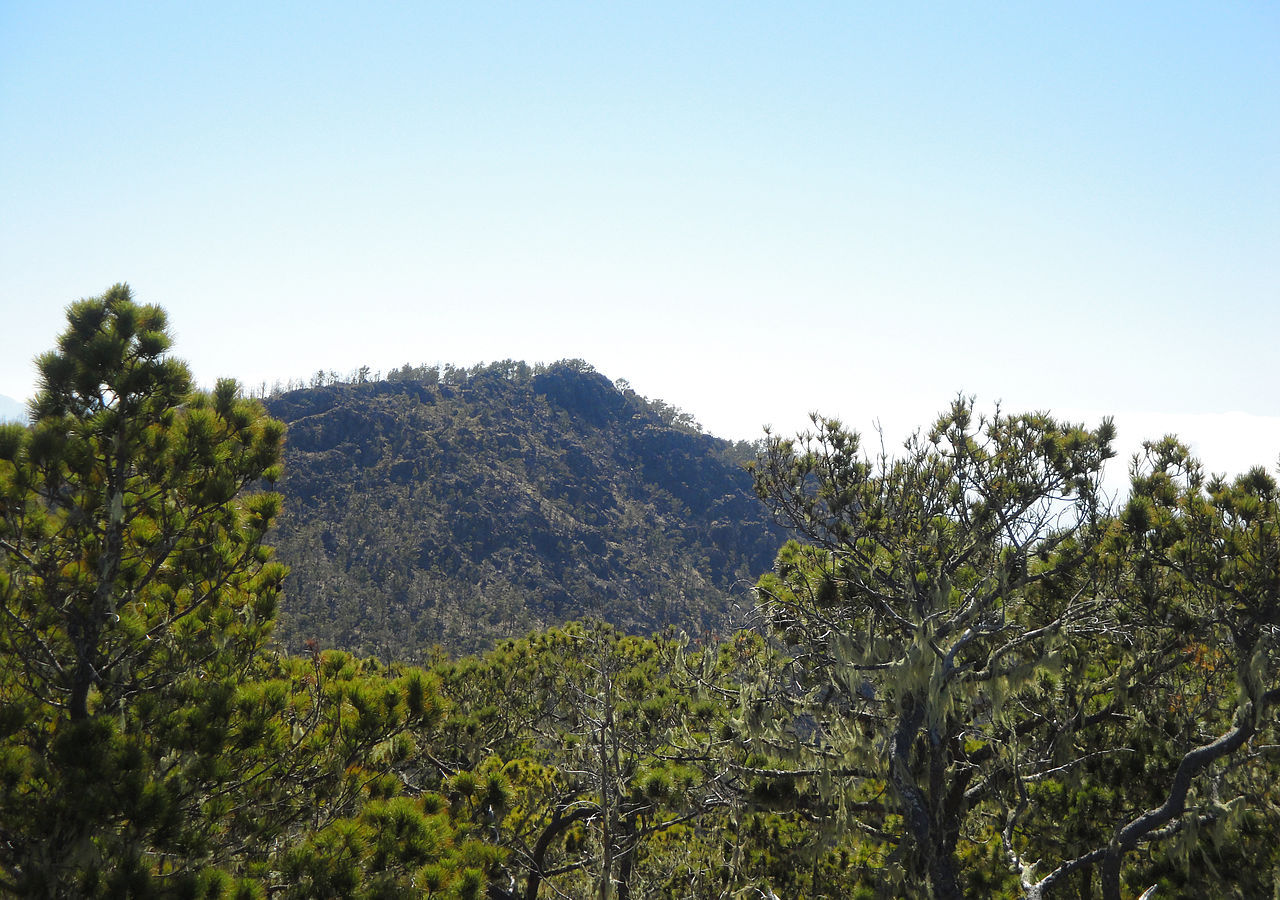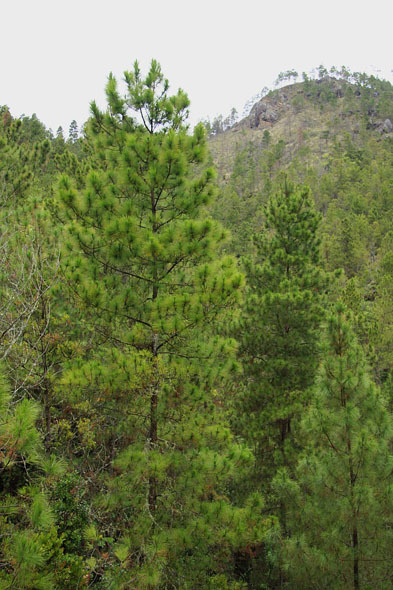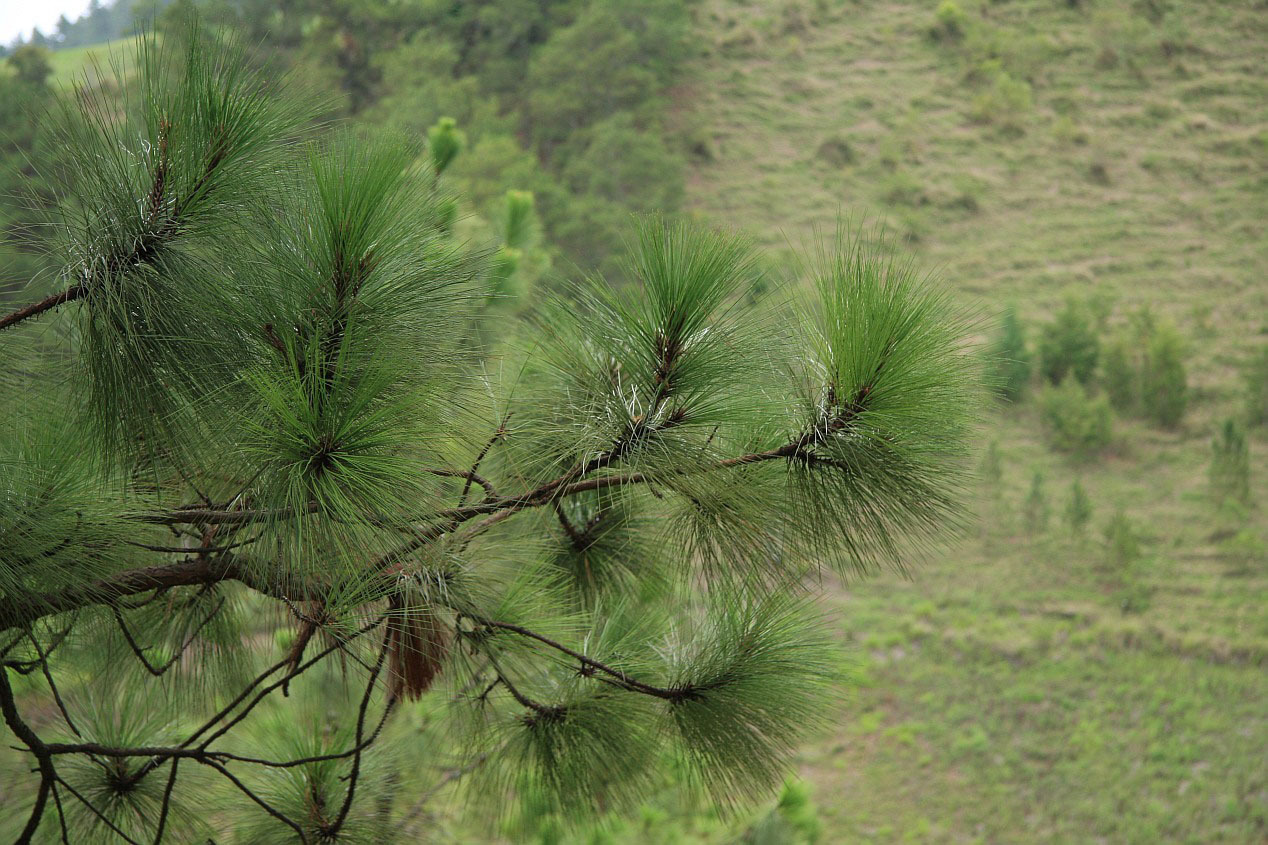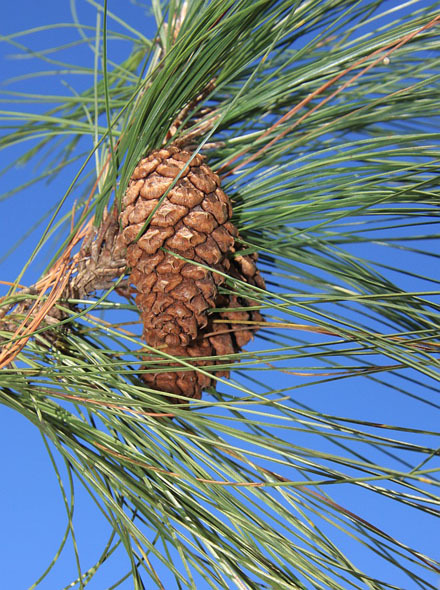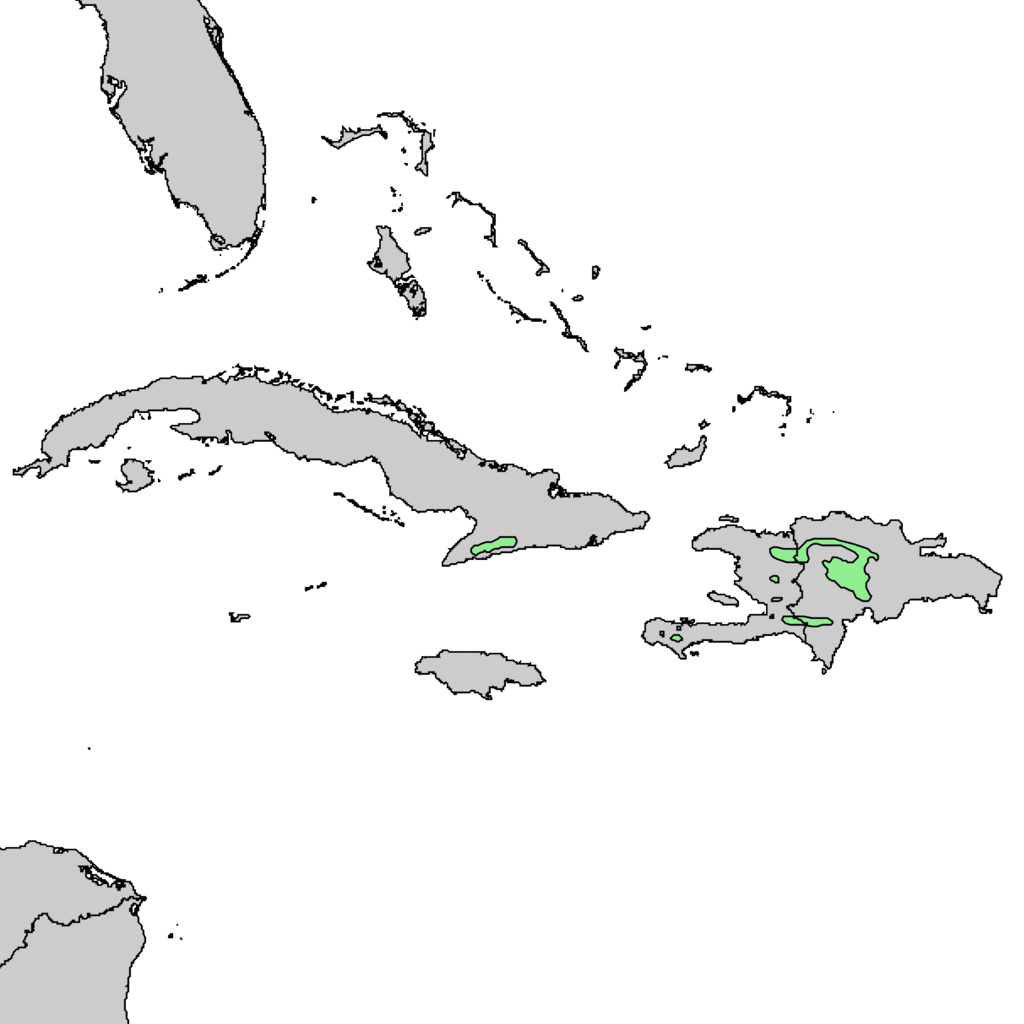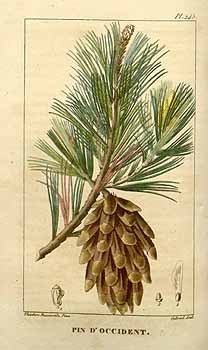
subgenus Pinus, section Trifoliae (Duhamel), subsection Australes (Loudon).
Pinus occidentalis, first described in 1788 by Olof Peter Swartz (1760-1818), is commonly known as Hispaniola pine; as well as Pino criollo in the Spanish language. This conifer is native to western Hispaniola, hence the species name, Latin for "western").
Ethnobotany. This is the only pine found on the island of Hispaniola, where it was an important timber tree and supported an export market into the second quarter of the 20th century. It is now not faring well. Political anarchy in Haiti in the 1900s led to elimination of conservation measures and government regulation of forestry and then reckless depletion of the already much-reduced pine forests. Things are a little better in the Dominican Republic, but slash-and-burn subsistence agriculture by a rapidly growing population in both countries is eliminating forest land.
Description. Hispaniola pine is an evergreen coniferous species of tree that grows to mature heights of 100 to 150 feet (30 - 45 m) with a trunk up to 40 to 60 inches (1 - 1.5 m) in diameter, measured at breast height; and an oval to bowl-shaped crown with upswept branches densely clothed with foliage at the tips.
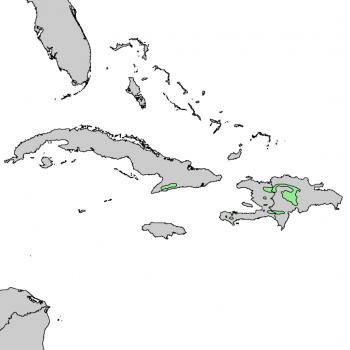
Distribution. This species is native to the island of Hispaniola - Haiti and the Dominican Republic; as well as eastern Cuba - Granma and Santiago de Cuba provenices; found growing at elevations of 650 - 10,000 feet (200 - 3,200 m) in mixed or pure stands.
Hardy to USDA Zone 9 - cold hardiness limit between 20° and 30°F (-6.6° and -1.1°C).
